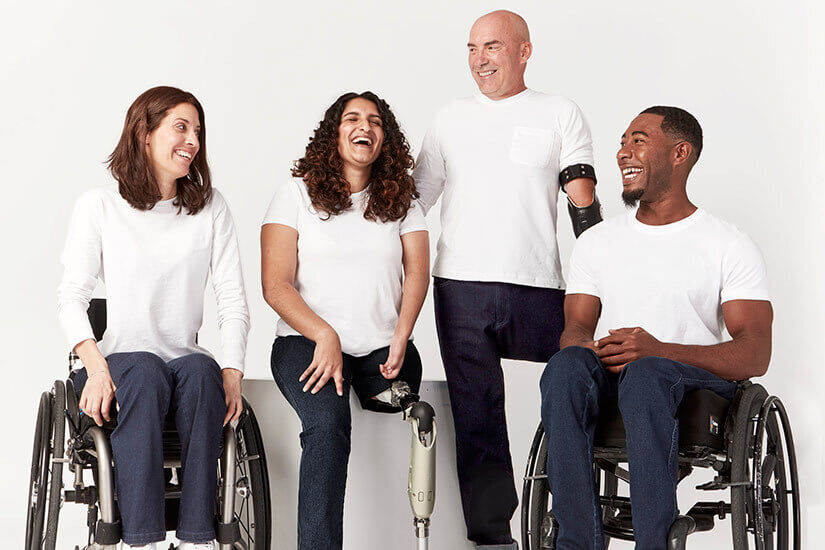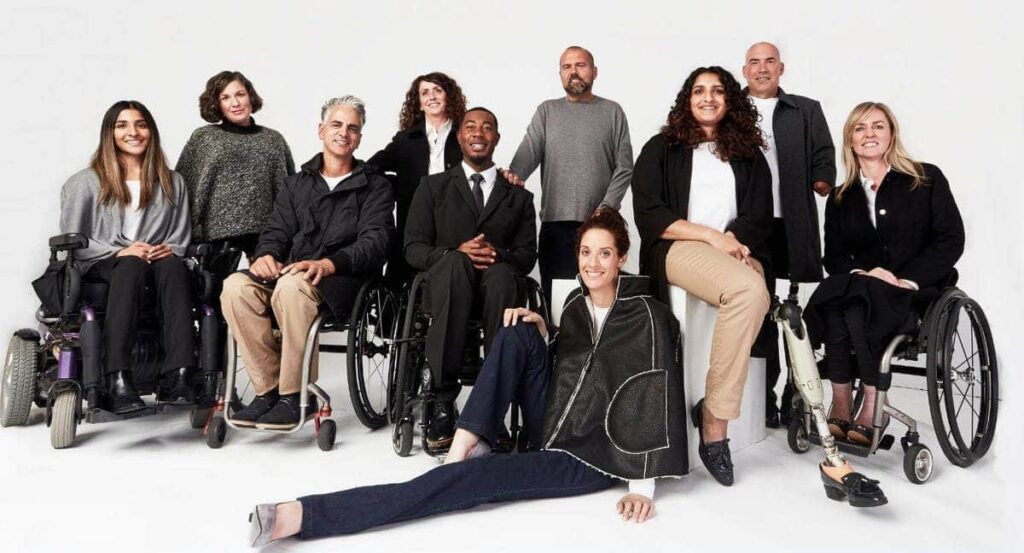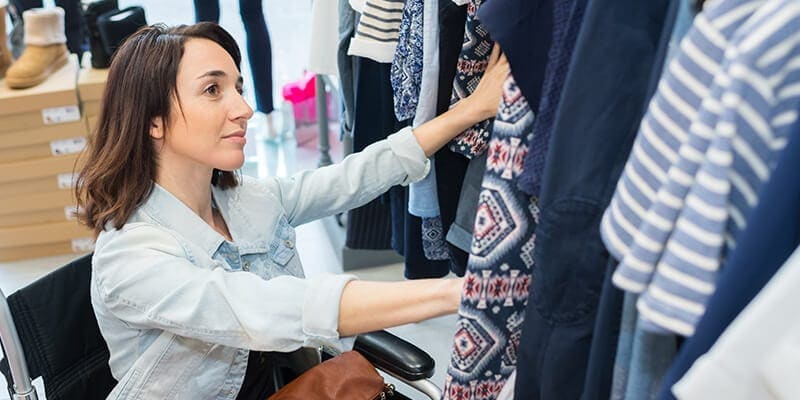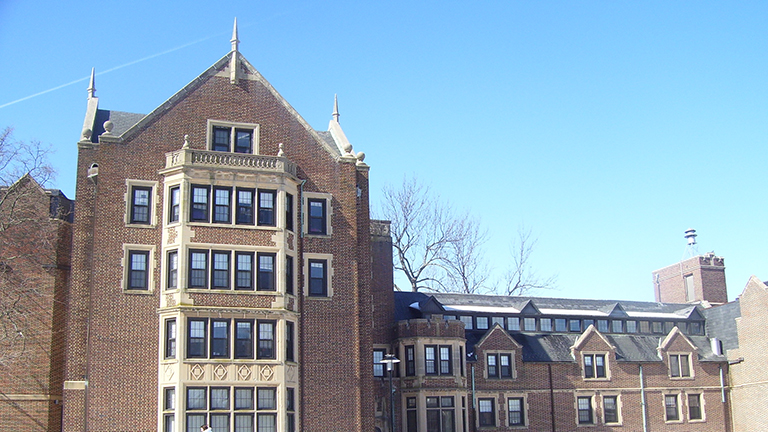This year is the 30th anniversary of the Americans with Disabilities Act (July 26, 1990) in the U.S. To celebrate, Ascension is taking a quick look at the history and recent developments in adaptive fashion.
Over the past few years, several large companies have invested in developing adaptive fashion lines for people living with disabilities. However, fashion designed for people living with designed for people living with disabilities is not a new concept.

Helen Cookman and Functional Fashion
Helen Cookman designed many garments for people with disabilities between 1955 and 1973, sparking the Functional Fashion movement and cofound the Clothing Research and Development Foundation with the late New York Times Style Editor Virginia Pope. Cookman, who was hard of hearing, developed an interest in designing clothing for people with disabilities during a research residency at NYU’s Institute of Physical Medicine and Rehabilitation. Most famously, Cookman is known for her design of Levi Strauss’s Function Jeans line from 1976 (Cookman had already passed when LS&Co picked up the jeans). Unfortunately, after the passing of both Cookman and Pope, the Functional Fashion movement largely lost steam.
Adaptive Fashion Today
However, the recent renaissance in adaptive fashion has seen designers and corporations take a stitch from the catalogs of Cookman and her associates. For example, Izzy Camilleri, a Canadian couture designer well known for her clothing designs within the film and music industries since the 1980s, began IZ Adaptive, an adaptive fashion line, in 2009. Companies investing in adaptive fashion include Tommy Hilfiger and Target.
The CDC estimates that there are 61 million people living with disabilities in the U.S. alone. According to an American Institute for Research report, this demographic of people represent a collective total disposable income of almost $500 billion. Citing similar research, supporters of adaptive fashion believe the concept makes good business sense in the contemporary era.

What Does Adaptive Fashion Look Like?
But what is adaptive fashion, what does it look like today, and what are the ideas informing its creation? We’ve ran through a few examples below but if you want the authoritative word on the advancement of adaptive fashion and current design trends, watch Stephanie Thomas’ Tedx Talk. Founder of Cur8table.com and fashion journalist, Stephanie has a lot to say about the future of adaptive fashion.
For those with Seated Body Types:
- Pants are designed longer in the back than in the front to maintain dignity and comfort
- Longer leg lengths to maintain proper fit while seated
- Lower and more forward pockets for easier access while sitting and with zipper closures to ensure items don’t fall out
For those with Prosthetics:
- Sheer cloth
- High, offset waistlines
Autism Syndrome (Hyperactive Sensory Systems)
- Removing shirt tags
- Seamless socks
- Soft clothing
- Leggings
Guiding Principles of Adaptive Fashion Design
The above features are only a small glimpse at what goes into designing Adaptive Fashions. To ensure success, designers and companies consult regularly with physical therapists and people living with disabilities. However, perhaps more important than the design features themselves, are the principles driving the creation of those features.
According to Stephanie Thomas, the guiding principles behind adaptive fashion design are:
- Accessible: Easy to put on and take off on your own or with a dresser
- Smart: Safe, not causing harm to the body – medically safe
- Fashionable: Loved by the wearer. Fits their lifestyle and their body type.
There’s more to it then manufacturing clothing with discrete elastic bands and low, zippered pockets. In her Ted Talk, Stephanie discusses several misconceptions or stereotypes that the fashion industry must overcome before truly reaching a place where adaptive fashion can gain momentum as a movement within the fashion industry.
- People with Disabilities are All the Same: Wrong. People with disabilities are people first and like all people, they have individual needs and clothing is no exception.
- Designing for those with Disabilities is too Difficult: Wrong. Niche industries have always existed; maternity, plus size, petite – in a world where dogs have clothing designed and fashioned for them, designing fashionable clothing for those with disabilities is no trouble at all.
- People with Disabilities Can’t Afford It: Wrong. In a July 2019 article, Vogue magazine stated that adaptive fashion is primed to become a $400 billion global market by 2026.
Learn More About the Adaptive Fashion Industry
For more information about adaptive fashion, visit Runway of Dreams. Runway of Dreams is a non-profit organization dedicated to supporting accessibility and inclusion in the fashion industry. The organization also partnered with Tommy Hilfiger, Nike, and Target to kick off the September 2018 New York Fashion Week.
Need Accessibility? Contact Ascension
With over 2,000 wheelchair lifts providing round -the-clock accessibility to locations across the globe – including two lifts at the New York Fashion Institute of Technology – Ascension is a proud supporter of equal access in all of its many forms.
Need a wheelchair lift for your space? Check out Ascension wheelchair lifts now. Have a question about how an Ascension wheelchair lift can help you? Call Ascension at (520) 881-3993 or email us at websales@ascension-lift.com.
Are you an architect looking for a wheelchair lift? Ascension has all the information you need. See our website for lift details.



